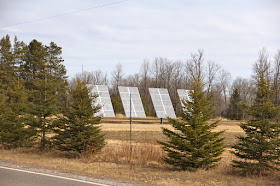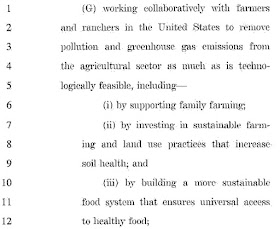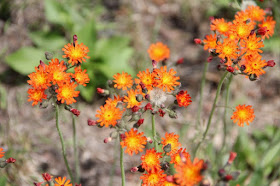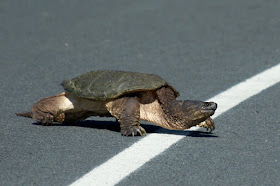The 2019 Minnesota legislative session, and the special session needed because the #mnleg couldn't finish its work within the constitutional deadline, is now history. Unfortunately, at a time when the effects of climate breakdown are becoming more and more apparent, the session(s) response to a climate emergency ended as,
according to MinnPost,
‘An absolute failure’: Why the Legislature’s energy and climate budget does a whole lot of nothing
If you're old enough, or enough of a movie buff, you may remember the wonderful quote from the 1995 movie,
Apollo 13, "Failure is not an option." The same is true of our need to transition from fossil fuels to renewable energy and incorporate energy efficiency as expediently and safely as possible. Minnesotans should be ashamed of this recent legislative failure. Too many opportunities will get missed with essentially no time to make up for those misses. We're facing a deadline of 2030, 11 years away.
 |
solar panels, organic farm, Northern Minnesota
|
If you were ever a child, if you have a child or children, if you hope to have a child or children, if you care about any child or children, DO NOT LET THOSE WHO CLAIM TO REPRESENT US FAIL US THIS WAY! If we want to be able to honestly claim "we're better than this," we need to demonstrate it.
We, as citizens, residents, inhabitants, occupants, and/or voters in Minnesota have a chance to further convince our elected "leaders" of the absolute necessity to fix their failure as soon as possible. A call for a
global strike on September 20, 2019, has been issued. We've received reports that a group called
Minnesotans for a Livable Planet are organizing Community Summits on September 22, 2019 to coincide with a United Nations Summit in New York City on September 23, 2019.
 |
solar powered business, Ely, Minnesota
|
We plan to be involved with other Minnesotans in the strike and the summits. The county in which we live has had
solar farms erupting like mushrooms after a wet Spring. Many of them could be improved and economically enhanced by incorporating
pollinator-friendly plantings under the solar panels, providing an economic boost to farmers and rural Minnesota. We are rapidly entering an age in which we need to design and develop not one-fers, but two-fers, three-fers, and more-fers. There's more than enough work to be done. Please consider joining us.
The year I was born the atomic bomb went off.
Here I’d just begun, and someone
found the switch to turn off the world.
In the furnace-light, in the central solar fire
of that heat lamp, the future got very finite,
and it was possible to imagine time-travelers
failing to arrive, because there was no time
to arrive in. Inside the clock in the hall
heavy brass cylinders descended.
Tick-tock, the chimes changed their tune
one phrase at a time. The bomb became
a film star, its glamorous globe of smoke
searing the faces of men in beach chairs.
Someone threw up every day at school.
No time to worry about collective death,
when life itself was permeated by ordeals.
And so we grew up accepting things.
In bio we learned there were particles
cruising through us like whales through archipelagoes,
and in civics that if Hitler had gotten the bomb
he’d have used it on the inferior races,
and all this time love was etching its scars
on our skins like maps. The heavens
remained pure, except for little white slits
on the perfect blue skin that planes cut
in the icy upper air, like needles sewing.
From one, a tiny seed might fall
that would make a sun on earth.
And so the century passed, with me still in it,
books waiting on the shelves to become cinders,
what we felt locked up inside, waiting to be read,
down the long corridor of time. I was born
the year the bomb exploded. Twice
whole cities were charred like cities in the Bible,
but we didn’t look back. We went on thinking
we could go on, our shapes the same,
darkened now against a background lit by fire.
Forgive me for doubting you’re there,
Citizens, on your holodecks with earth wallpaper—
a shadow-toned ancestor with poorly pressed pants,
protected like a child from knowing the future.
********************************************
Thanks for visiting. Come again when you can.
Please be
kind
to each other while you can.
























